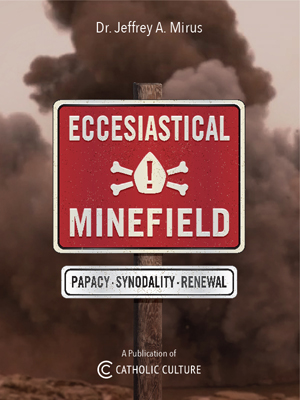Catholic Recipe: Simnel Cake I
Laetare Sunday (4th Sunday in Lent) is also known as Mothering Sunday in Great Britain. One delicacy especially associated with Mothering Sunday is the Simnel Cake, a yeast cake very yellow in color because of the saffron and candied peel it contained. The simnels were wrapped in cloth and boiled, then brushed with egg and baked, making a very hard cake indeed, and giving rise to the story of the lady who used one for years as a footstool.
The name simnel seems to be derived from the Latin word for very fine flour, simila. Long before the above boiled and baked cake came into being, there was made an unleavened wafer of the same name. In those days the recipe was apparently very simple, calling only for fine wheat flour, for honey and anise to sweeten and flavor, and cold water to make a thin batter which was stamped with a wafering iron.
The later simnel cakes were much more complicated of structure, but they remained very popular despite the complaints of the bakers that too much hard work was involved in making them. There is a modern version of this cake which is quite good and worth the effort.
On November 9, the church celebrates the dedication of the Lateran Basilica, called “mother and head of all the churches of the city and the world.” Since this is the "mother church" this is also a day for simnel cake.
DIRECTIONS
Cream the butter and sugar till smooth. Add the eggs one at a time, beating after each addition. Sift the flour and salt, and add to the first mixture. Dust the peel and the currants with a little flour and add to the batter. Line a round cake tin with wax paper and pour in half of the dough. Add a layer of almond paste, then the remaining dough. Bake at 300° F. for one hour. Ice with a thin white icing flavored with a few drops of almond extract.
Recipe Source: Feast Day Cookbook by Katherine Burton and Helmut Ripperger, David McKay Company, Inc., New York, 1951





